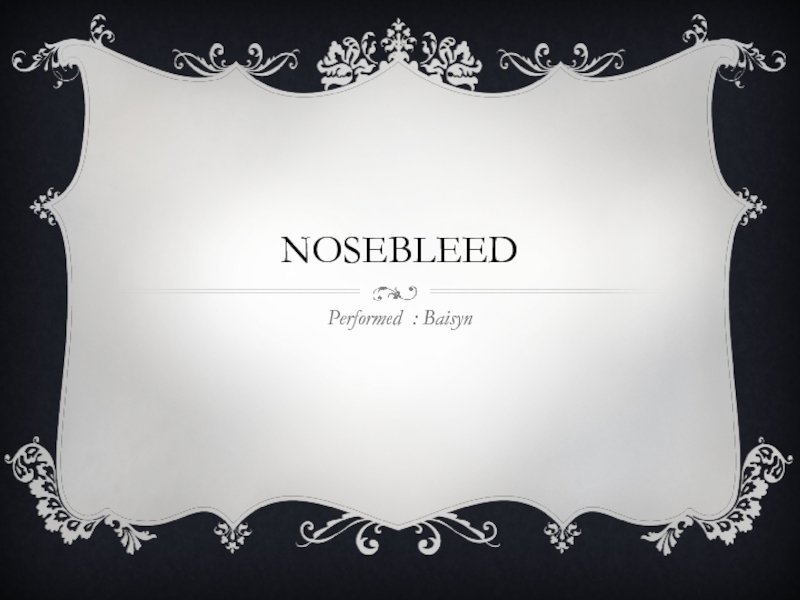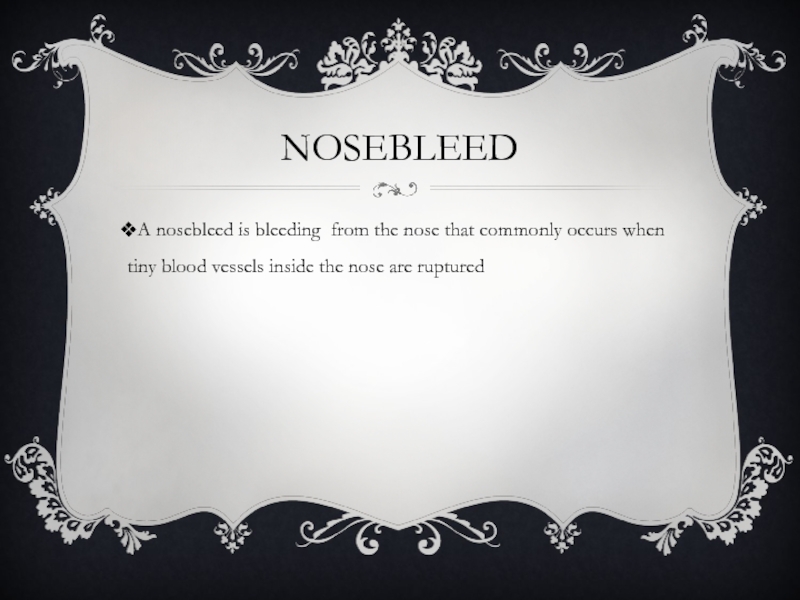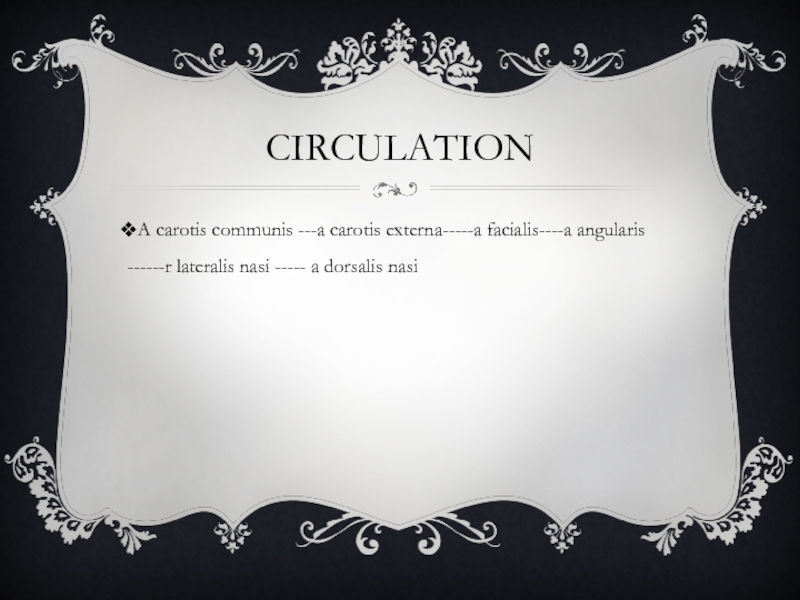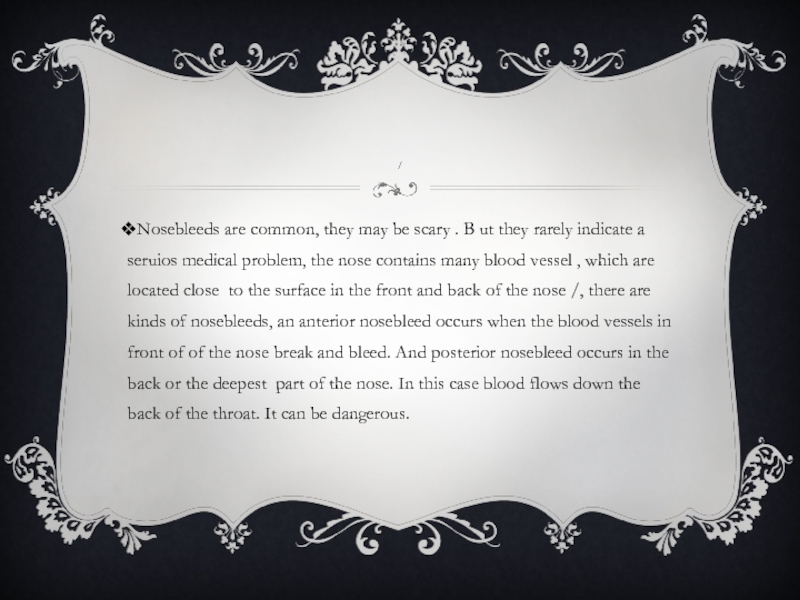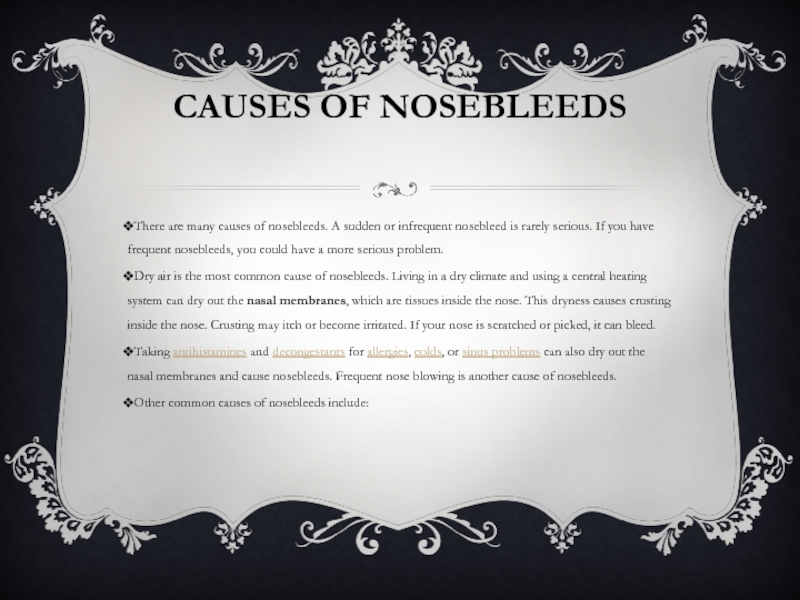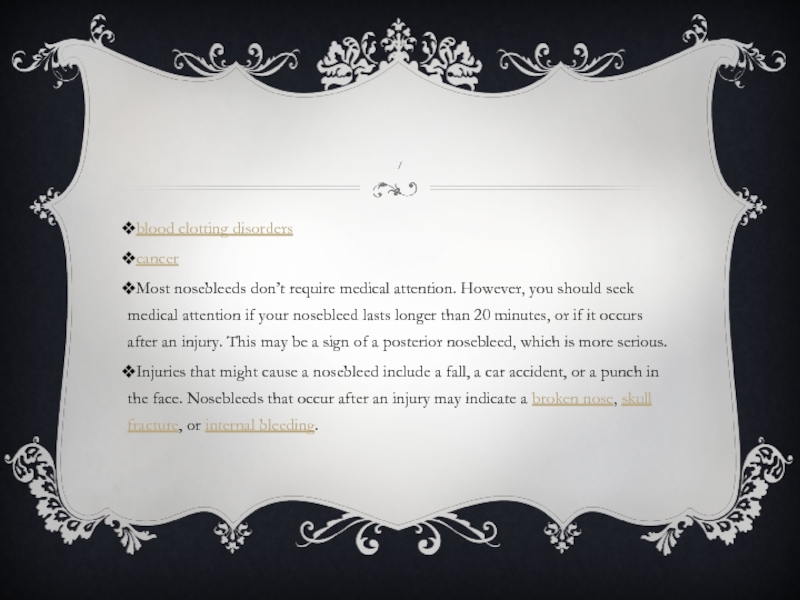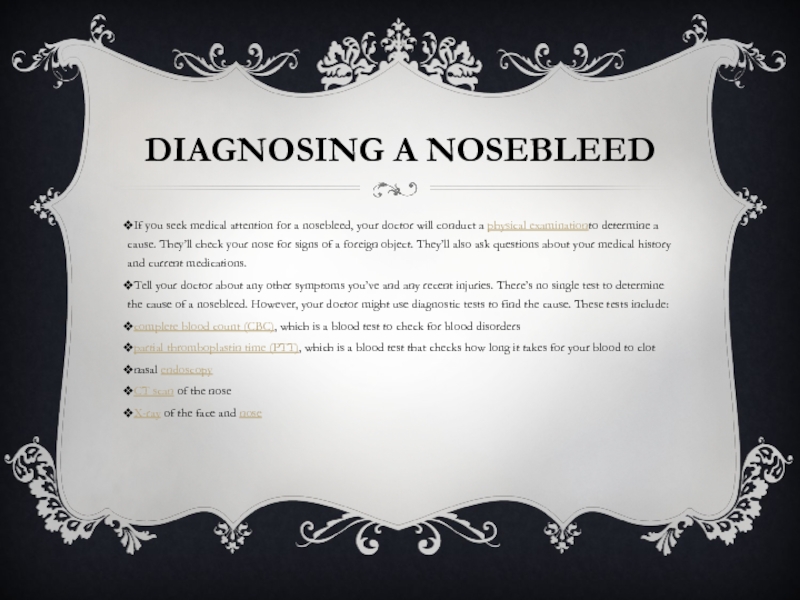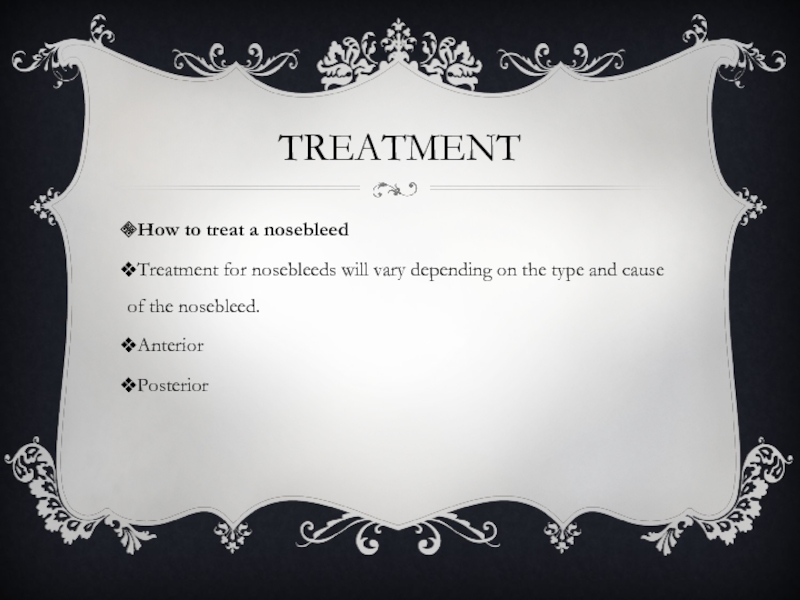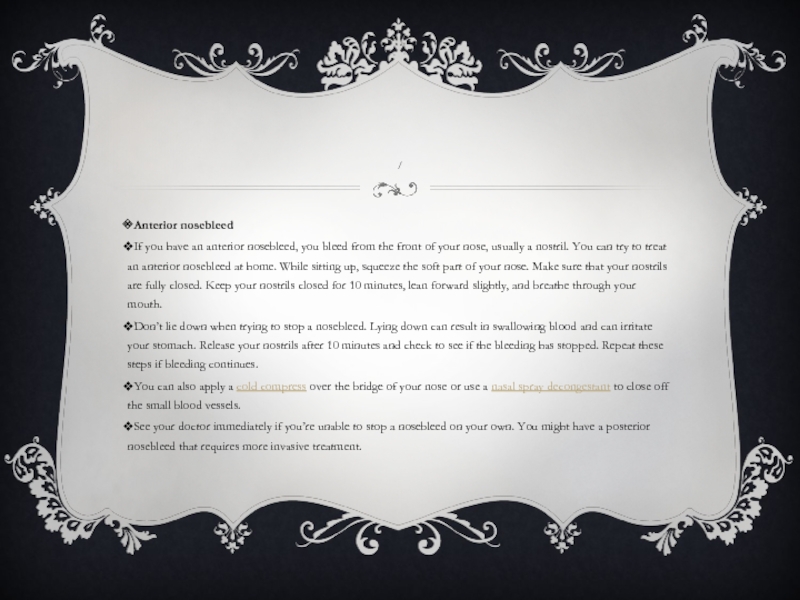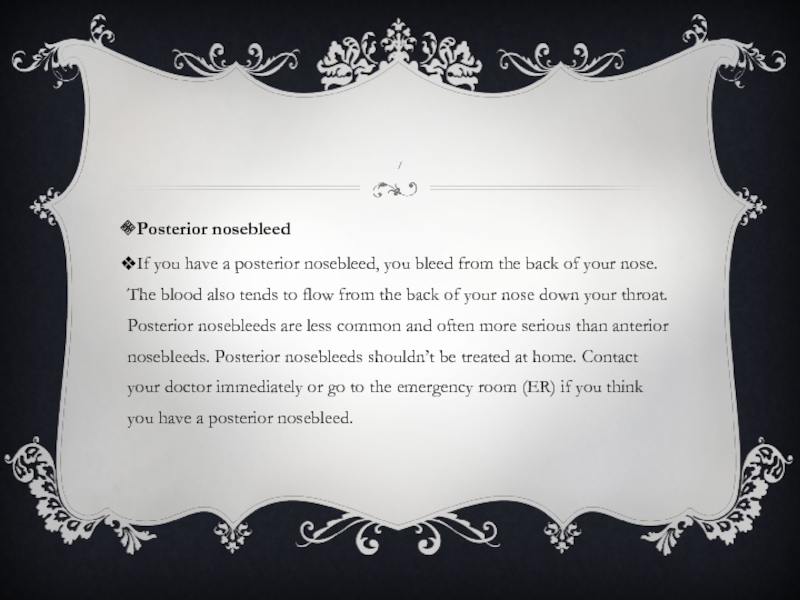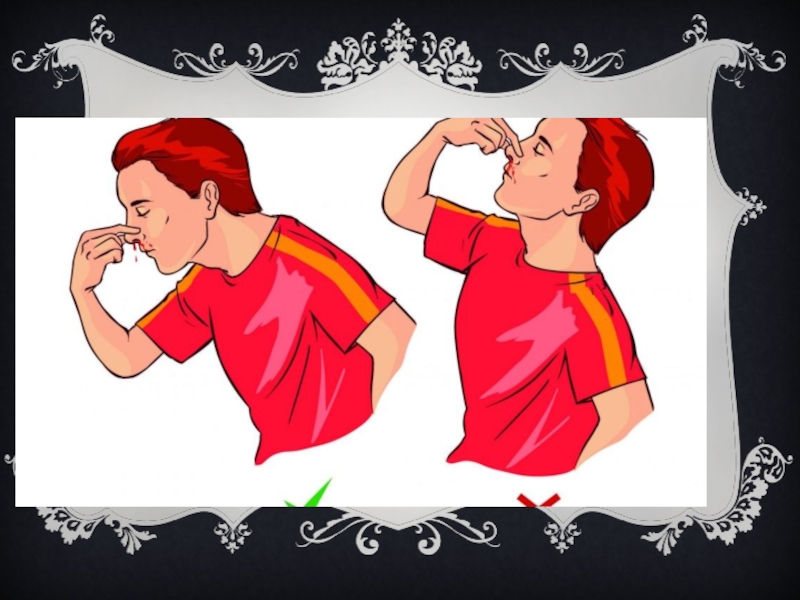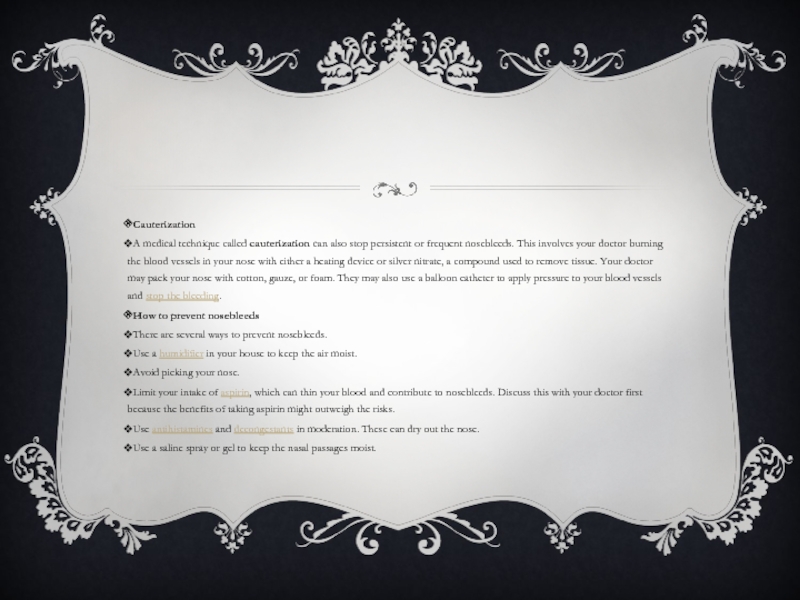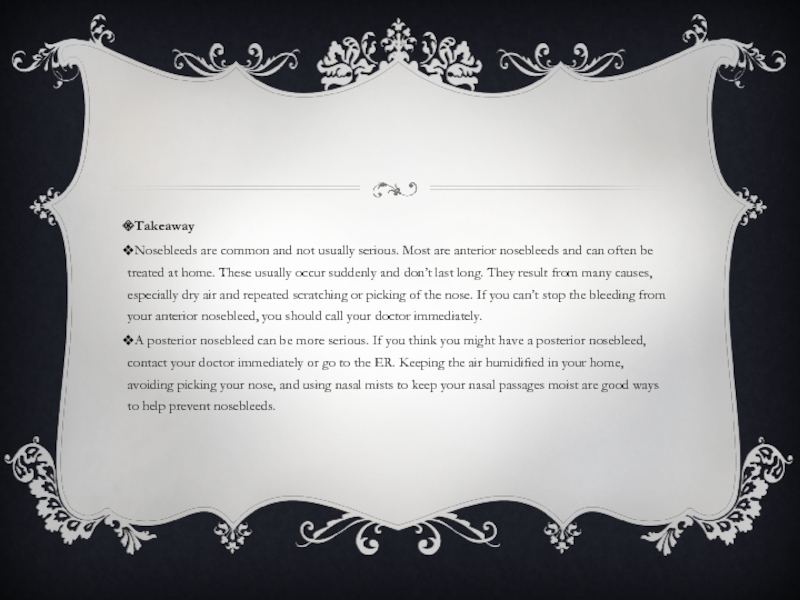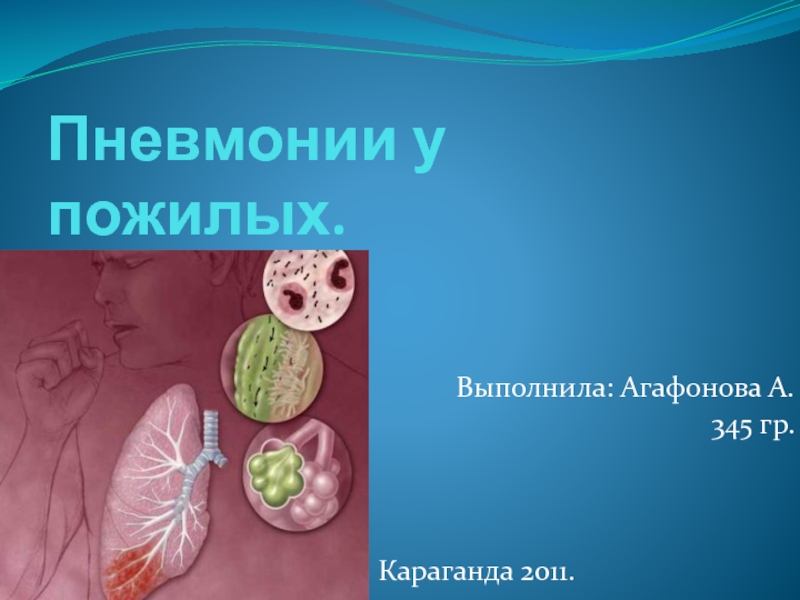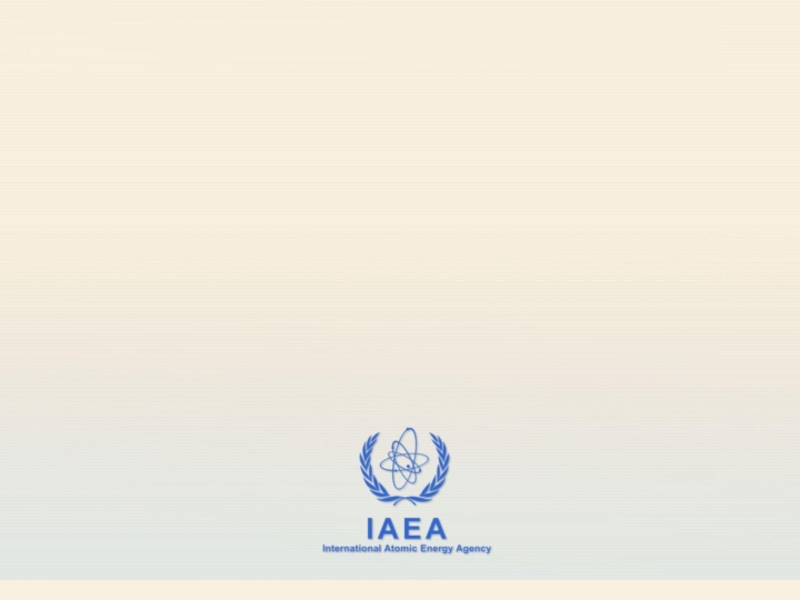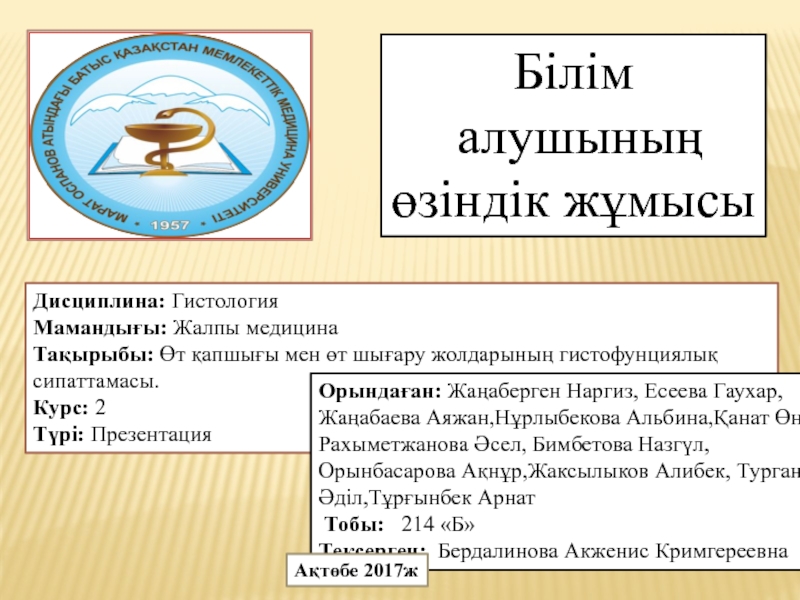- Главная
- Разное
- Дизайн
- Бизнес и предпринимательство
- Аналитика
- Образование
- Развлечения
- Красота и здоровье
- Финансы
- Государство
- Путешествия
- Спорт
- Недвижимость
- Армия
- Графика
- Культурология
- Еда и кулинария
- Лингвистика
- Английский язык
- Астрономия
- Алгебра
- Биология
- География
- Детские презентации
- Информатика
- История
- Литература
- Маркетинг
- Математика
- Медицина
- Менеджмент
- Музыка
- МХК
- Немецкий язык
- ОБЖ
- Обществознание
- Окружающий мир
- Педагогика
- Русский язык
- Технология
- Физика
- Философия
- Химия
- Шаблоны, картинки для презентаций
- Экология
- Экономика
- Юриспруденция
Nosebleed презентация
Содержание
- 1. Nosebleed
- 2. NOSEBLEED A nosebleed is bleeding from the
- 4. CIRCULATION A carotis communis ---a carotis
- 5. / Nosebleeds are common, they may be
- 6. CAUSES OF NOSEBLEEDS There are many
- 7. CAUSES foreign object stuck in the nose
- 8. / blood clotting disorders cancer Most nosebleeds
- 9. DIAGNOSING A NOSEBLEED If you seek
- 10. TREATMENT How to treat a nosebleed Treatment
- 11. / Anterior nosebleed If you have an
- 12. / Posterior nosebleed If you have a
- 14. Cauterization A medical technique called cauterization can also
- 15. Takeaway Nosebleeds are common and not
Слайд 2NOSEBLEED
A nosebleed is bleeding from the nose that commonly occurs when
tiny blood vessels inside the nose are ruptured
Слайд 4CIRCULATION
A carotis communis ---a carotis externa-----a facialis----a angularis ------r lateralis
nasi ----- a dorsalis nasi
Слайд 5/
Nosebleeds are common, they may be scary . B ut they
rarely indicate a seruios medical problem, the nose contains many blood vessel , which are located close to the surface in the front and back of the nose /, there are kinds of nosebleeds, an anterior nosebleed occurs when the blood vessels in front of of the nose break and bleed. And posterior nosebleed occurs in the back or the deepest part of the nose. In this case blood flows down the back of the throat. It can be dangerous.
Слайд 6CAUSES OF NOSEBLEEDS
There are many causes of nosebleeds. A sudden or
infrequent nosebleed is rarely serious. If you have frequent nosebleeds, you could have a more serious problem.
Dry air is the most common cause of nosebleeds. Living in a dry climate and using a central heating system can dry out the nasal membranes, which are tissues inside the nose. This dryness causes crusting inside the nose. Crusting may itch or become irritated. If your nose is scratched or picked, it can bleed.
Taking antihistamines and decongestants for allergies, colds, or sinus problems can also dry out the nasal membranes and cause nosebleeds. Frequent nose blowing is another cause of nosebleeds.
Other common causes of nosebleeds include:
Dry air is the most common cause of nosebleeds. Living in a dry climate and using a central heating system can dry out the nasal membranes, which are tissues inside the nose. This dryness causes crusting inside the nose. Crusting may itch or become irritated. If your nose is scratched or picked, it can bleed.
Taking antihistamines and decongestants for allergies, colds, or sinus problems can also dry out the nasal membranes and cause nosebleeds. Frequent nose blowing is another cause of nosebleeds.
Other common causes of nosebleeds include:
Слайд 7CAUSES
foreign object stuck in the nose
chemical irritants
allergic reaction
injury to the nose
repeated sneezing
picking
the nose
cold air
upper respiratory infection
large doses of aspirin
Other causes of nosebleeds include:
high blood pressure
bleeding disorders
cold air
upper respiratory infection
large doses of aspirin
Other causes of nosebleeds include:
high blood pressure
bleeding disorders
Слайд 8/
blood clotting disorders
cancer
Most nosebleeds don’t require medical attention. However, you should
seek medical attention if your nosebleed lasts longer than 20 minutes, or if it occurs after an injury. This may be a sign of a posterior nosebleed, which is more serious.
Injuries that might cause a nosebleed include a fall, a car accident, or a punch in the face. Nosebleeds that occur after an injury may indicate a broken nose, skull fracture, or internal bleeding.
Injuries that might cause a nosebleed include a fall, a car accident, or a punch in the face. Nosebleeds that occur after an injury may indicate a broken nose, skull fracture, or internal bleeding.
Слайд 9
DIAGNOSING A NOSEBLEED
If you seek medical attention for a nosebleed, your
doctor will conduct a physical examinationto determine a cause. They’ll check your nose for signs of a foreign object. They’ll also ask questions about your medical history and current medications.
Tell your doctor about any other symptoms you’ve and any recent injuries. There’s no single test to determine the cause of a nosebleed. However, your doctor might use diagnostic tests to find the cause. These tests include:
complete blood count (CBC), which is a blood test to check for blood disorders
partial thromboplastin time (PTT), which is a blood test that checks how long it takes for your blood to clot
nasal endoscopy
CT scan of the nose
X-ray of the face and nose
Tell your doctor about any other symptoms you’ve and any recent injuries. There’s no single test to determine the cause of a nosebleed. However, your doctor might use diagnostic tests to find the cause. These tests include:
complete blood count (CBC), which is a blood test to check for blood disorders
partial thromboplastin time (PTT), which is a blood test that checks how long it takes for your blood to clot
nasal endoscopy
CT scan of the nose
X-ray of the face and nose
Слайд 10TREATMENT
How to treat a nosebleed
Treatment for nosebleeds will vary depending on
the type and cause of the nosebleed.
Anterior
Posterior
Anterior
Posterior
Слайд 11/
Anterior nosebleed
If you have an anterior nosebleed, you bleed from the
front of your nose, usually a nostril. You can try to treat an anterior nosebleed at home. While sitting up, squeeze the soft part of your nose. Make sure that your nostrils are fully closed. Keep your nostrils closed for 10 minutes, lean forward slightly, and breathe through your mouth.
Don’t lie down when trying to stop a nosebleed. Lying down can result in swallowing blood and can irritate your stomach. Release your nostrils after 10 minutes and check to see if the bleeding has stopped. Repeat these steps if bleeding continues.
You can also apply a cold compress over the bridge of your nose or use a nasal spray decongestant to close off the small blood vessels.
See your doctor immediately if you’re unable to stop a nosebleed on your own. You might have a posterior nosebleed that requires more invasive treatment.
Don’t lie down when trying to stop a nosebleed. Lying down can result in swallowing blood and can irritate your stomach. Release your nostrils after 10 minutes and check to see if the bleeding has stopped. Repeat these steps if bleeding continues.
You can also apply a cold compress over the bridge of your nose or use a nasal spray decongestant to close off the small blood vessels.
See your doctor immediately if you’re unable to stop a nosebleed on your own. You might have a posterior nosebleed that requires more invasive treatment.
Слайд 12/
Posterior nosebleed
If you have a posterior nosebleed, you bleed from the
back of your nose. The blood also tends to flow from the back of your nose down your throat. Posterior nosebleeds are less common and often more serious than anterior nosebleeds. Posterior nosebleeds shouldn’t be treated at home. Contact your doctor immediately or go to the emergency room (ER) if you think you have a posterior nosebleed.
Слайд 14
Cauterization
A medical technique called cauterization can also stop persistent or frequent nosebleeds. This
involves your doctor burning the blood vessels in your nose with either a heating device or silver nitrate, a compound used to remove tissue. Your doctor may pack your nose with cotton, gauze, or foam. They may also use a balloon catheter to apply pressure to your blood vessels and stop the bleeding.
How to prevent nosebleeds
There are several ways to prevent nosebleeds.
Use a humidifier in your house to keep the air moist.
Avoid picking your nose.
Limit your intake of aspirin, which can thin your blood and contribute to nosebleeds. Discuss this with your doctor first because the benefits of taking aspirin might outweigh the risks.
Use antihistamines and decongestants in moderation. These can dry out the nose.
Use a saline spray or gel to keep the nasal passages moist.
How to prevent nosebleeds
There are several ways to prevent nosebleeds.
Use a humidifier in your house to keep the air moist.
Avoid picking your nose.
Limit your intake of aspirin, which can thin your blood and contribute to nosebleeds. Discuss this with your doctor first because the benefits of taking aspirin might outweigh the risks.
Use antihistamines and decongestants in moderation. These can dry out the nose.
Use a saline spray or gel to keep the nasal passages moist.
Слайд 15
Takeaway
Nosebleeds are common and not usually serious. Most are anterior nosebleeds
and can often be treated at home. These usually occur suddenly and don’t last long. They result from many causes, especially dry air and repeated scratching or picking of the nose. If you can’t stop the bleeding from your anterior nosebleed, you should call your doctor immediately.
A posterior nosebleed can be more serious. If you think you might have a posterior nosebleed, contact your doctor immediately or go to the ER. Keeping the air humidified in your home, avoiding picking your nose, and using nasal mists to keep your nasal passages moist are good ways to help prevent nosebleeds.
A posterior nosebleed can be more serious. If you think you might have a posterior nosebleed, contact your doctor immediately or go to the ER. Keeping the air humidified in your home, avoiding picking your nose, and using nasal mists to keep your nasal passages moist are good ways to help prevent nosebleeds.
